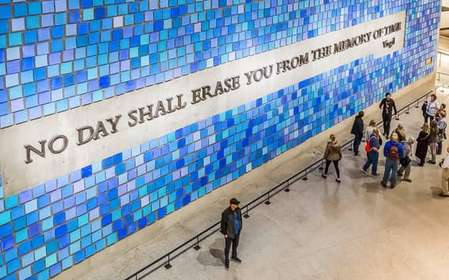- Home
- Useful Tips
- Visiting the Tenement Museum on...
Exploring the Tenement Museum offers a profound glimpse into New York's immigrant history, but many visitors face unexpected challenges. Over 60% of first-time guests report missing key exhibits due to poor timing or sold-out tours, while others feel overwhelmed by the museum's emotional narratives without proper context. The narrow hallways and steep staircases of these preserved 19th-century buildings create accessibility concerns that aren't always clear from promotional materials. For history enthusiasts and casual visitors alike, these logistical hurdles can transform what should be an enlightening experience into a stressful outing. Understanding how to navigate the museum's unique layout and tour system makes the difference between skimming surfaces and truly connecting with the powerful stories embedded in these walls.


Choosing the right tour for your interests and mobility needs
The Tenement Museum offers seven distinct tours across two historic buildings, each presenting different aspects of immigrant life. While the 'Hard Times' tour focuses on economic struggles during depressions, 'Sweatshop Workers' delves into garment industry conditions. Those with limited mobility should know that only the 'Shop Life' tour is fully wheelchair accessible, as other experiences involve navigating original narrow staircases. Families often prefer the 'Meet the Residents' living history program, where costumed interpreters bring stories to life in ways that engage younger visitors. Tour capacities are intentionally kept small (15 people maximum) to preserve the intimate nature of the spaces, making advance planning crucial especially for weekend visits when slots fill fastest.
Securing tickets without the stress of sell-outs
With over 200,000 annual visitors, prime time slots at the Tenement Museum frequently book weeks in advance. The museum releases tickets precisely 30 days ahead at midnight EST, with Wednesday mornings typically seeing slightly better availability than weekends. A little-known option is their neighborhood walking tour combo ticket, which includes building access and often has better availability than standalone tours. If your preferred date shows as sold out online, calling the museum directly can sometimes yield last-minute cancellations, particularly for late afternoon weekdays. Consider visiting in January or February when tourist numbers drop by nearly 40% - you'll enjoy smaller groups and more personal interactions with educators in the intimate tenement spaces.
Enhancing your visit with neighborhood context
The Lower East Side's layered immigrant history extends far beyond the museum's walls, and understanding this context deepens the experience. Arrive early to explore nearby Katz's Delicatessen (established 1888) or visit the Eldridge Street Synagogue to see where many museum subjects worshipped. The museum's neighborhood walking tours beautifully connect the tenement stories to surviving local businesses and community spaces. For a self-guided alternative, the museum's free audio app highlights significant locations within a six-block radius, including the former site of the Forward newspaper where many immigrants worked. These surrounding elements help bridge the century between the museum's historical focus and the vibrant multicultural neighborhood you see today.
Navigating the emotional impact of immigrant stories
Many visitors are unprepared for how powerfully the Tenement Museum's narratives resonate with personal family histories. The museum staff recommends allowing time after your tour to process the experience at their visitor center or nearby Seward Park. Those tracing ancestry will appreciate the on-site genealogy resources and connections to Ellis Island records. For educators bringing student groups, the museum offers preparatory materials to frame the challenging themes appropriately for different age groups. Remember that these cramped apartments housed real families facing tremendous adversity - the museum's power lies in making their struggles and triumphs viscerally tangible through careful preservation and thoughtful interpretation.



